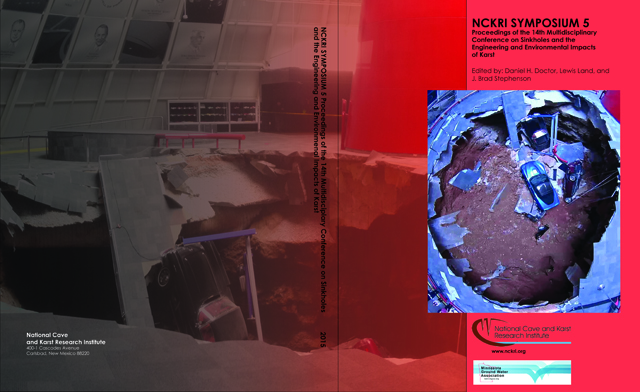Abstract
We discuss measurements of the precursory and post-formation ground displacement in the vicinity of the Bayou Corne, Louisiana, sinkhole made using interferometric synthetic aperture radar (InSAR) and data from the L-band UAVSAR instrument. Large precursory movement was observed at the sinkhole site and shown to be predominantly horizontal in direction, in contrast to sinkhole precursors previously detected with InSAR, all of which indicated vertical deformation. Here we discuss how two opposing imaging directions were used to determine the precursory horizontal movement, and use the same technique to look at the progression of post-formation ground displacement around the expanding sinkhole during the interval 2012-2014. We find that the Bayou Corne sinkhole has expanded asymmetrically about the initial location, and show that expansion has tracked ground movement observed with InSAR along the margins of the water-filled central subsided area. This work shows that InSAR applied to images acquired from multiple directions can be used to image incipient sinkhole formation over large areas and to track the expected direction of expansion. We discuss how geologists can best use the InSAR technique to quantitatively monitor ground movement associated with sinkholes, particularly in areas where radar rapidly decorrelates, e.g., in Florida or Louisiana. These results demonstrate that InSAR could be used in sinkhole warning systems across a much broader geographical area than previously demonstrated, and for identifying both precursory and post-formation surface movement.
Rights Information
DOI
http://dx.doi.org/10.5038/9780991000951.1083
Included in
Pre-Event and Post-Formation Ground Movement Associated with the Bayou Corne Sinkhole
We discuss measurements of the precursory and post-formation ground displacement in the vicinity of the Bayou Corne, Louisiana, sinkhole made using interferometric synthetic aperture radar (InSAR) and data from the L-band UAVSAR instrument. Large precursory movement was observed at the sinkhole site and shown to be predominantly horizontal in direction, in contrast to sinkhole precursors previously detected with InSAR, all of which indicated vertical deformation. Here we discuss how two opposing imaging directions were used to determine the precursory horizontal movement, and use the same technique to look at the progression of post-formation ground displacement around the expanding sinkhole during the interval 2012-2014. We find that the Bayou Corne sinkhole has expanded asymmetrically about the initial location, and show that expansion has tracked ground movement observed with InSAR along the margins of the water-filled central subsided area. This work shows that InSAR applied to images acquired from multiple directions can be used to image incipient sinkhole formation over large areas and to track the expected direction of expansion. We discuss how geologists can best use the InSAR technique to quantitatively monitor ground movement associated with sinkholes, particularly in areas where radar rapidly decorrelates, e.g., in Florida or Louisiana. These results demonstrate that InSAR could be used in sinkhole warning systems across a much broader geographical area than previously demonstrated, and for identifying both precursory and post-formation surface movement.

